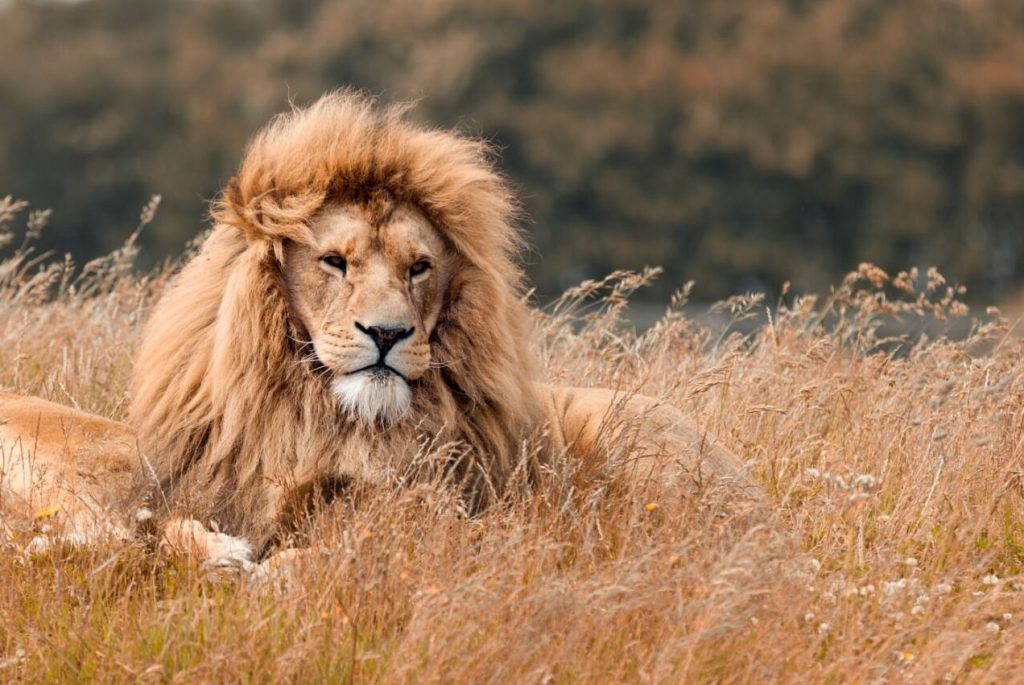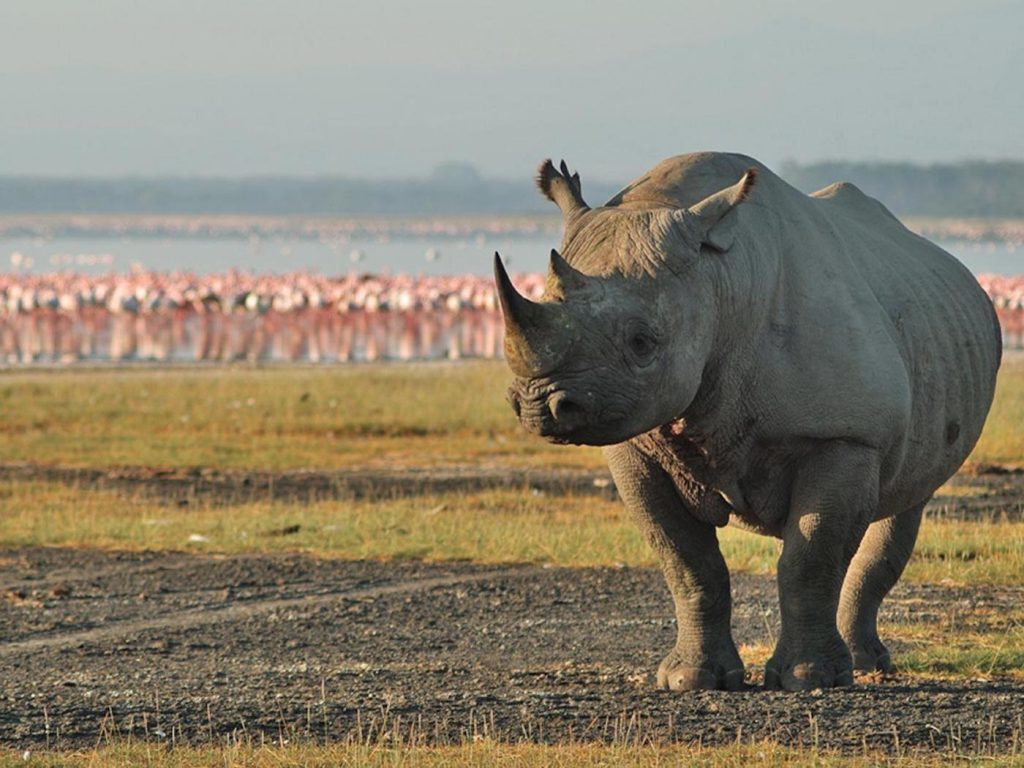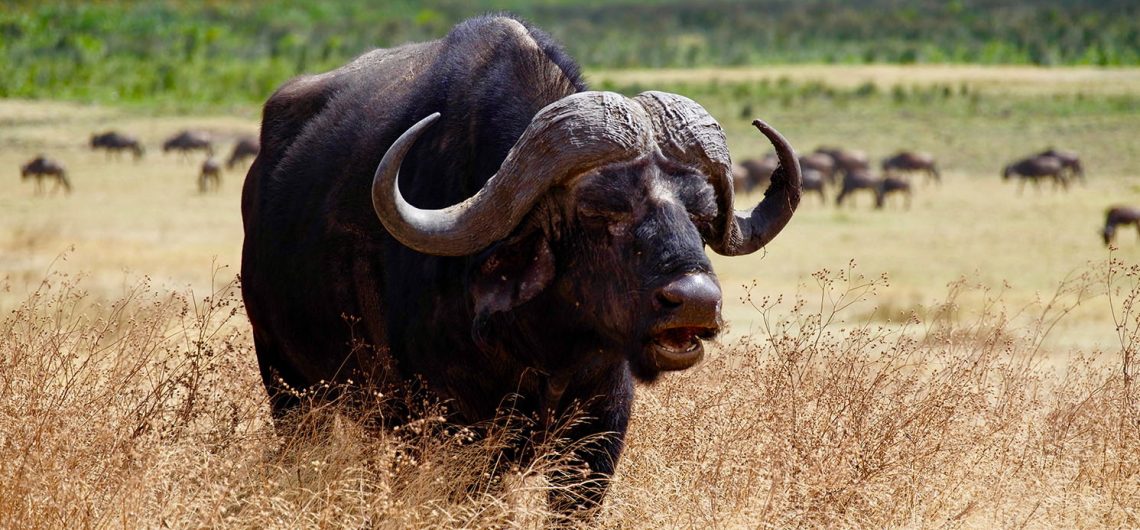What are the big five, where to see them, their population
For anyone organizing an African safari, or specifically a Tanzania safari tour, I believe you are familiar with the phrase Big Five as this is the most prevalently used phrase while marketing Africa’s wildlife safari tourism. In fact most of the tour agents and Safari Company will use this term to describe the diverse wildlife species found in the various national parks as well as game reserves across the continent. It is with no doubt that most of the holiday makers that visit this beautiful continent come to see these amazing animals but then the biggest question remains:
What is the safari Big 5?
Well the phrase Big Five originally was used by game hunters several years back in time to mean the different species including the African elephant, the rhino (black and white), the African leopard, the Cape buffalo plus the African lion which were the most challenging as well as the most dangerous animals to be hunted down on foot. Interestingly among the early hunters anyone able to hunt any of these trophy animals was considered to have caught the biggest prize to them.
Today however when we talk about the Big five we refer to the top most sought-after animals for Any game viewing safari in Africa. This in reality is considered a very fascinating and highly rewarding encounter to be able to sight all these animals while on safari as justified by many who have visited this beautiful continent.
In this article we are going to look at each of these animals in detail, get to know them more and even know where they can best be seen in Africa. Read also on the Top 20 antelopes of the Serengeti National Park.
-
The African Lion (Panthera leo)
Also known commonly as the king of the jungle or the sub-Saharan savanna, the lion is the second largest among the cat family coming second to the tiger. Lions are the most social of all animals in the cut family and they stay in prides comprised of several cubs, numerous females and one or two males. In the wild, these animals can live to as many as 14 years despite the fact that lion cub have a high mortality rate, and the males on the other hand are normally attacked and engaged in territorial fights during which a number of them died. The African Lions are most active in the night however even during the day especially in the early mornings they may be seen hunting; it is for that reason that most people during their African safari will sight these animals normally resting in tree shades. During the day they can sleep for up to twenty (20) hours in a single day. Hunting is done by the lionesses which normally work together especially when trying to catch a bigger prey like a buffalo. being ambush hunters, they well camouflage in the vegetation thanks to their yellowish-brown color.

What do lions eat?
Generally speaking lions eat anything they can catch with most of their food being obtained by hunting. When the females hunt, they step away so that the males can eat first.
How fast are lions?
Lions can run at a speed of about 80 kilometers per hour but just for shirt busts and may jump up to a distance of 11 meters; it’s for that reason that they normally hunt in parks.
Where to see lions?
Lions can be seen in the number of countries in South Sahara among which are: Tanzania in the Ngorongoro conservation area, Serengeti National Park, South Africa in Kgalagadi transfrontier Park, Uganda in Murchison Falls National Park, Botswana in Okavango Delta and Kenya within the maasai Mara National Reserve.
Population of the Lions?
the biggest threat to the lion population is man, attacking the king of the jungle in various ways especially through encroaching on their natural habitat – the Lions have lost their habitat to man for agriculture and urbanization. Buffaloes also have a tendency o stabling lion cubs which has led to a great reduction of the population also lion cubs increasing their mortality rate. According to the IUCN red list, the lion is categorized as vulnerable.
-
The African Elephant (Loxodonta africana)
The elephant is the heaviest as well as the largest land animal, and a fully mature one can weigh up to 15,000 lb or 6.5 tons. Because of their amazing ability to adapt to different environments, these animals live in a variety of habitats ranging from the dry deserts to the verdant wetlands. Elephants have a tough skin that is about an inch thick which protects them from the thorny bushes while their very large ears help them to fun off the excess heat as well as regulate their body temperature. Generally speaking elephants are very social and live in large groups of or even more than a hundred individuals that are led by females. They use low frequency sounds to communicate amongst each other and these can travel for several miles. Normally the females remain in their herds for life whereas the young males have a tendency of creating bachelor groups where they live until they are old enough to create their own herds.
What do elephants eat?
Elephants in a single day can consume up to 375 lb of vegetation that includes fruits, small plants, roots, grasses, bushes and twigs.
How do elephants sleep?
This is a question commonly asked by many considering the massive size of these land Giants. Well interesting elephants are among the shortest sleeping mammals and can sleep from about 30 minutes to 2 hours in the night. They sleep by lying down. During the day they take short naps
Where to see elephants?
Elephants can be seen in various countries across the South Sahara and below are some of the popular destinations: Serengeti National Park in Tanzania, Addo elephant National Park in South Africa, South Luangwa National Park in Zambia, Queen Elizabeth National Park in Uganda and Chobe National Park in Botswana among many others. Tarangire National Park is the best park to see elephants with large herds that can be upto 300 strong.
Elephant population?
Back in the 1970s and the 1980s there was a very high demand for Ivory internationally which led to severe poaching of this species. Several years later, an international ban on ivory trade was put in place and this greatly reduced the killing of these animals. Today a number of African countries are still faced with the challenge of poaching, but many governments have put in place very stringent rules against poaching of the elephants which has somewhat assisted in stabilizing the population of elephants.
-
The Rhino
In Africa there are two main species of rhinos: the white rhino (Ceratotherium simum) and the black rhino (Diceros bicornis). Unfortunately these two species are at a high risk of Extinction as a result of the severe poaching on the African continent that was caused by several Asian countries having a high demand for the rhino horn. these two species cannot be differentiated my their color however the best way to do so is by looking at their lips. The White rhino has a flat wide lip / mouth while The Black rhinos have a prehensile pointed lip / mouth. An adult black rhino can weigh up to 1400 kg while an adult White rhino can weigh up to 2300 kilograms. White rhinos are social and normally seen in pairs while the Black rhinos prefer a solitary life and are bad-tempered. They are great browsers with the white rhinos browsing the open Savannah while The Black rhinos browse the scrubland as well as the desert areas.

How do rhinos sleep?
A Rhino can sleep while lying down or while standing and can sleep as long as eight hours each time
Where to see the rhino?
Mkomazi National Park in Tanzania, Ziwa rhino sanctuary in Uganda, Etosha National Park in Namibia, Lewa wildlife conservancy in Kenya and Hluhluwe-Imfolozi park in South Africa (which has the largest population of rhinos in the world).
Rhino Population?
Today it is approximated that there are less than 5,000 Black rhinos remaining in the world while 20,000 white rhinos are left. It’s for that reason that the black rhino according to the IUCN red list is categorized as critically endangered.
-
The Cape Buffalo (Syncerus caffer)
A fully grown cape buffalo weighs between 420 kg to 890 kg and they are generally frightening creatures well-known to be among the most dangerous wild animals on the African continent. cape Buffalo are bad temperature and when threatened they can easily attack using their strong curved horns. In addition they can gather together in large heads of more than 1,000 individuals especially within the open grasslands to peacefully graze. They normally form a defensive circle around the weaker members in the herd among which are: the young calves and the sick ones especially when being attacked by other animals such as lions. Although there are four subspecies of the cape buffaloes, South Africa as well as East Africa have the largest subspecies which is commonly seen. Today when you visit some of the destinations where game hunting is allowed as a tourist activity you will realize that the buffaloes continue to be one of the trophy animals. Safari in Tanzania especially the Northern Tanzania offers you the best chance to spot the cape buffalo as well as other members of the African safari’s Big five.
What do buffalos eat?
Buffalo’s mainly feed on vegetation such as bushes, tall and coarse grass. they also drink a lot of water on a daily basis and it is for that reason that they cannot be found in the very arid desert-like areas
Where to see cape buffalos?
these animals are prevalent across Africa but the most popular places where these buffaloes can be seen these include: katavi National Park in Tanzania, Queen Elizabeth National Park in Uganda, lower Zambezi National Park in Zambia, Kruger National Park in South Africa, the Maasai Mara National Reserve in Kenya and Chobe National Park in Botswana among many others
Population of the cape buffaloes?
The Cape buffalo is a prevalent species whose biggest threat is man who encroaches on its natural habitat. The biggest predators to attack buffaloes are the lions while these gigantic animals are also susceptible to a number of cattle diseases such as bovine tuberculosis and rinderpest.
-
The African leopard (Panthera pardus)
Among all the big five animals this is the most elusive of them all. They are completely nocturnal and very shy spending most of the day time hidden away. Leopards are very good climbers and go up the trees not only to sight their prey but also to keep their fresh catch from other hunters such as hyenas and lions. It’s for that reason that holidaymakers on Safari in Africa are advised to scan up in the trees if they wants to see leopards. The normally scan large territories and hardly ever remain in the same area for several days. They have black spots that help them to camouflage well in the natural surroundings. The males have a tendency of marking their territories by making claw marks as well as urinating. Leopards are very strong and may take down an animal bigger than them. They are very fast runners (56 kilometers per hour), can jump over a height of 3 meters in the air and not to forget the fact that they are very good swimmers.
What do Leopards eat?
Leopards prey on anything they can get such as fish, warthogs, gazelles, baboons, antelopes, large birds, snakes and monkeys.
What is lifespan of leopards?
In the wild they can live between 12 to 17 years and an adult can weigh as much as 90 kg. the females have a gestation period of 90 – 105 days and give birth to anything between 2 to 6 kittens.
Where can I see leopards?
Some of the best places to see them include Kenya’s samburu national Park, South Africa’s Londolozi game reserve, Zambia’s South Luangwa national park and Botswana’s Moremi Game reserve.
What is the Population of Leopards?
The biggest threat to the Leopards are human beings who have encroached on their natural habitat. These have greatly encroached on the natural habitat of these animals for urbanization and agriculture. Today the leopard is listed as a Vulnerable species according to the IUCN Red List.
How to plan a Big Five African Safari in Tanzania
are you interested in visiting the big five animals of Africa, Contact Us today and we shall organize for you a very memorable wildlife Tanzania Safari during which you will get a chance to see a wild range of other fascinating animals up close as you explore the different safari destination such as Serengeti National park best known for its wildebeest migration, the Ngorongoro Conservation Area, Selous Game Reserve and the largest national park in Africa Ruaha National Park


Comments